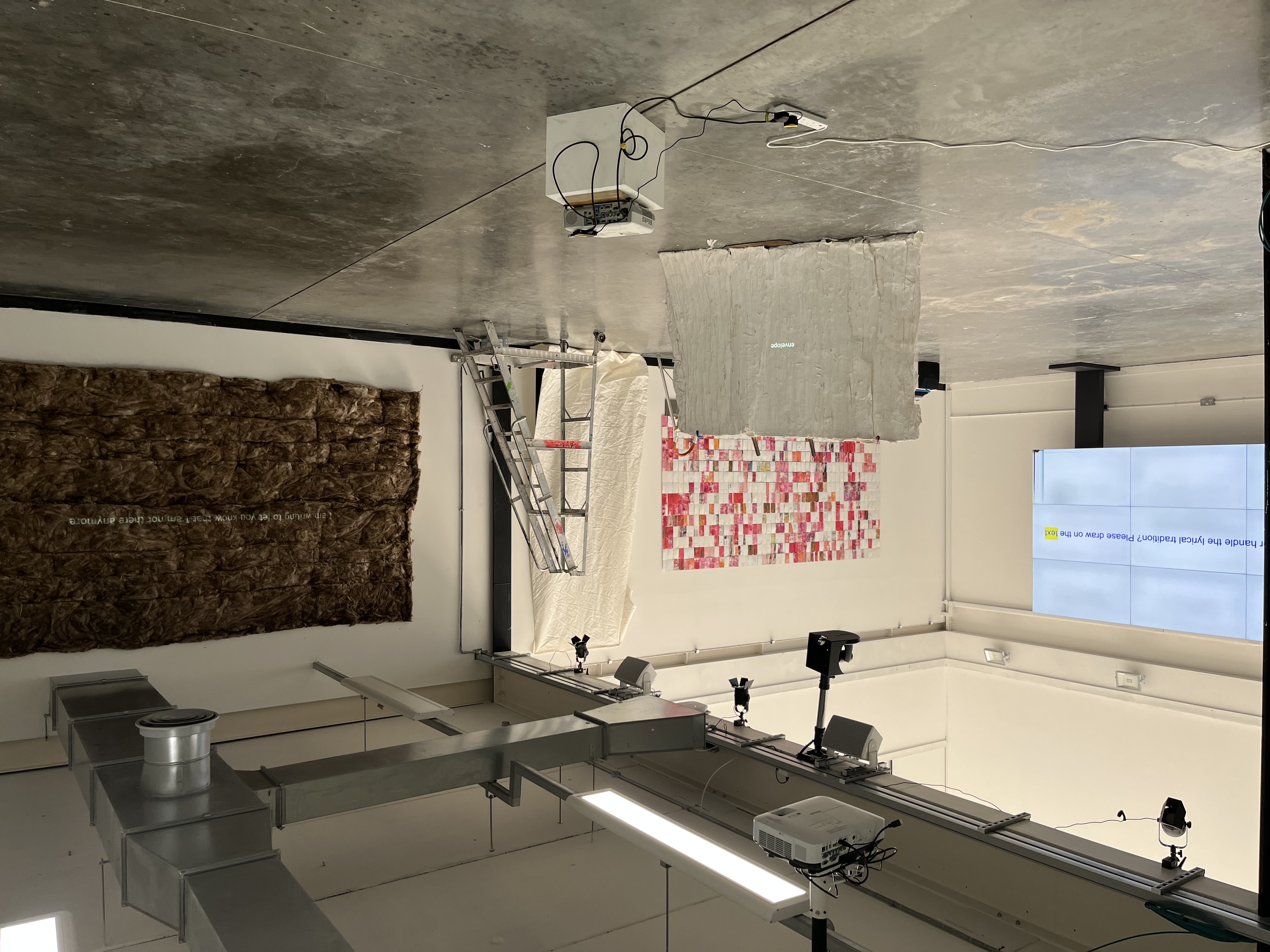
Video projected onto a plaster surface
The encounter with the material is radical. It is the shape that stands up with its hardness and fragility, with all its abjection (plaster is considered a minor, poor material). Because matter is constrained with nails, with ropes, with invisible metals (there is always violence).
Outside it’s windy, the sky rumbles and my notes swirl right behind me. Mark talks about the tides like a Pythagoras figure behind a curtain. He says: I especially like the low tides in the early morning, walking along the banks of the Thames looking for or waiting for what the movements of the river will bring. He says something like this, in English, between the noises of the students sculpting metal, all those machines at the back of the workshop. And I listen intently while straightening the bandages and rushing to unfold them before the plaster sets.
All those things that Mark said that day are now entwined there, between the bandages. The minimalist object that I had envisioned, a naked and clinical rectangle hanging from the Way Out East gallery, is now a Baroque thing, full of wrinkles, of maps from the time of Romans, of Rome, of Londinium.
Seeing the empty rectangle, the galvanized and trained cable on the edges supporting the shape of the text (an envelope), I write down in my little notebook: what the tide brings: the idea of text as support, between the material and the error.